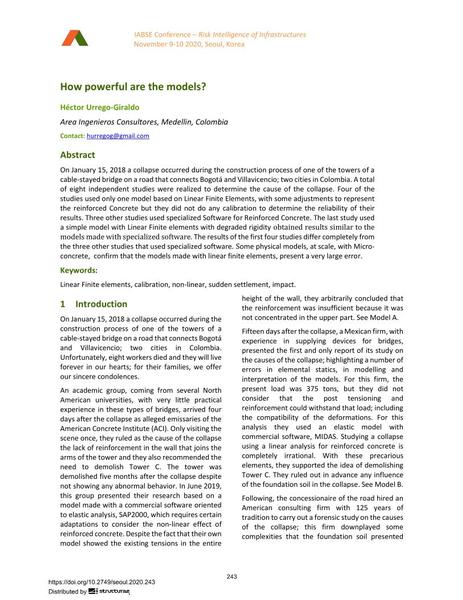How powerful are the models?

|
|
|||||||||||
Bibliografische Angaben
| Autor(en): |
Héctor Urrego-Giraldo
(Area Ingenieros Consultores, Medellin, Colombia)
|
||||
|---|---|---|---|---|---|
| Medium: | Tagungsbeitrag | ||||
| Sprache(n): | Englisch | ||||
| Tagung: | IABSE Conference: Risk Intelligence of Infrastructures, Seoul, South Korea, 9-10 November 2020 | ||||
| Veröffentlicht in: | IABSE Conference Seoul 2020 | ||||
|
|||||
| Seite(n): | 243-250 | ||||
| Anzahl der Seiten (im PDF): | 8 | ||||
| DOI: | 10.2749/seoul.2020.243 | ||||
| Abstrakt: |
On January 15, 2018 a collapse occurred during the construction process of one of the towers of a cable-stayed bridge on a road that connects Bogotá and Villavicencio; two cities in Colombia. A total of eight independent studies were realized to determine the cause of the collapse. Four of the studies used only one model based on Linear Finite Elements, with some adjustments to represent the reinforced Concrete but they did not do any calibration to determine the reliability of their results. Three other studies used specialized Software for Reinforced Concrete. The last study used a simple model with Linear Finite elements with degraded rigidity obtained results similar to the models made with specialized software. The results of the first four studies differ completely from the three other studies that used specialized software. Some physical models, at scale, with Microconcrete, confirm that the models made with linear finite elements, present a very large error. |
||||
| Stichwörter: |
Impakt Kalibrierung nichtlinear
|
||||
